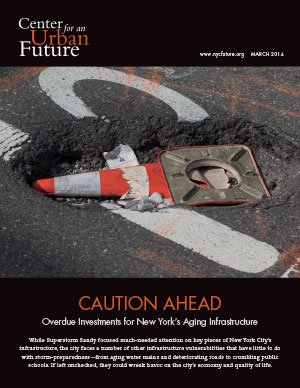Under other circumstances, last week would have been a big one for the long-term future of the MTA. For three days, the MTA Reinvention Commission paraded a series of bold-faced transit names through the MTA offices as it fielded suggestions concerning the future of transit. Eventually, it will develop action items aimed at considering and responding to “changes in customer expectations, commuting trends and extreme weather patterns” while focusing on future capital plans. Of course, the LIRR negotiations stole the show, but the Reinvention Commission’s work isn’t done.
As I could, I followed along with the commission’s happenings. I couldn’t attend the meeting, but various transit reporters and other news websites covered the happenings. As you can see from the three-hour video above, the MTA recorded (and streamed) the proceedings, and at times, I wasn’t overly impressed with what I saw. You can, if you wish, watch nearly all the sessions on YouTube.
Early on, the meetings delved into a policy discussion on affordable housing, and many of the subsequent comments concerned fairly obvious initiatives that aren’t so much about reinvention as they are about forward progress. We know the MTA hasn’t been able to move quickly on a MetroCard replacement program, and we know the costs of maintaining the current fare payment system will balloon in five years. That’s old news.
In a way, one set of testimony sums up the need for reinvention and the problem with last week’s commission hearings. It came from REBNY, and as Dana Rubinstein previewed last week, it focused again around the idea to send the 7 line to Secaucus. The idea, seemingly born on the back of a cocktail napkin by Mayor Michael Bloomberg, involves an ambitious plan to send the subway beyond New York’s border to a densely populated area of New Jersey.
“It has been more than 100 years since we have built a rail connection under the Hudson River,” outgoing REBNY head Steven Spinola said. “Since then, the city’s population has almost doubled and the population of the counties west of the Hudson has tripled. More significantly, almost a third of the city’s workforce is comprised of suburban workers, with a growing share coming from New Jersey.”
As always, the MTA expressed lukewarm but noted that “the Transportation Reinvention Commission exists to consider a wide variety of ideas from a wide variety of stakeholders.” The real issue though remains costs. To reinvent the MTA involves asking tough questions about why every construction project costs so much and can’t wrap on time. Once those hard issues are resolved, the MTA can focus more on expansion, improvement and reinvention.
In a related vein, last week for The Atlantic’s City Lab site, I focused on the Second Ave. Subway and wrote about the MTA’s need to build and need to control costs. The two are at loggerheads right now with no real solution in sight. I’ve written about the need to think big on this site before, and here’s a selection from my piece:
At $2.23 billion per mile, the Second Avenue subway is orders of magnitude more expensive than similar projects across the world. At various times, MTA officials have blamed the exceedingly high price tag on overstaffing due to onerous union requirements, the environmental review process, NIMBY opposition, the cost of working in New York, and the number of eligible contractors. The dollars present a major impediment to the future of the Second Avenue subway and to citywide transit expansion at large. Few politicians will fund projects that outlast their terms and cost so much money.
Meanwhile, New York faces a capacity problem. The city is expected to add one million residents over the next few decades, and river crossings—a key barrier separating where people live from where they work—are increasingly nearing capacity. Economically, the city can’t support construction that costs more than $2 billion per mile and takes a decade to build out a mere two of them. And New Yorkers are facing a future where political inaction could prevent badly needed subway expansion projects from seeing the light of day…Only subway lines can sustain New York’s projected growth, but New York can’t sustain multi-billion-dollar subway lines.
I don’t have the answers; if I did, I could head up the Reinvention Commission. But that issue — the cost vs. the need — should be the primary focus of any effort to reform the MTA. We can’t build subway lines that cost a few billion per mile, and we can’t move enough people through half-hearted Select Bus Service lines. Hopefully, the reinvention commission can look beyond the reiterative interest group politics at play and find some way to reform the MTA.

 Whenever I read another report about the state of New York City’s infrastructure, I think both of the boy who cried wolf and of Nero fiddling while Rome burns. As the trains continue to run everyday, the average New Yorker who pays no attention to these sorts of things must think we’re all crying wolf while the politicians who are aware of the problem but do nothing seem to be the ones fiddling while New York City slowly crumbles around them. The ultimate outcomes — spend lots of money or watch the city lose its global status — aren’t alluring, but something has to give.
Whenever I read another report about the state of New York City’s infrastructure, I think both of the boy who cried wolf and of Nero fiddling while Rome burns. As the trains continue to run everyday, the average New Yorker who pays no attention to these sorts of things must think we’re all crying wolf while the politicians who are aware of the problem but do nothing seem to be the ones fiddling while New York City slowly crumbles around them. The ultimate outcomes — spend lots of money or watch the city lose its global status — aren’t alluring, but something has to give.